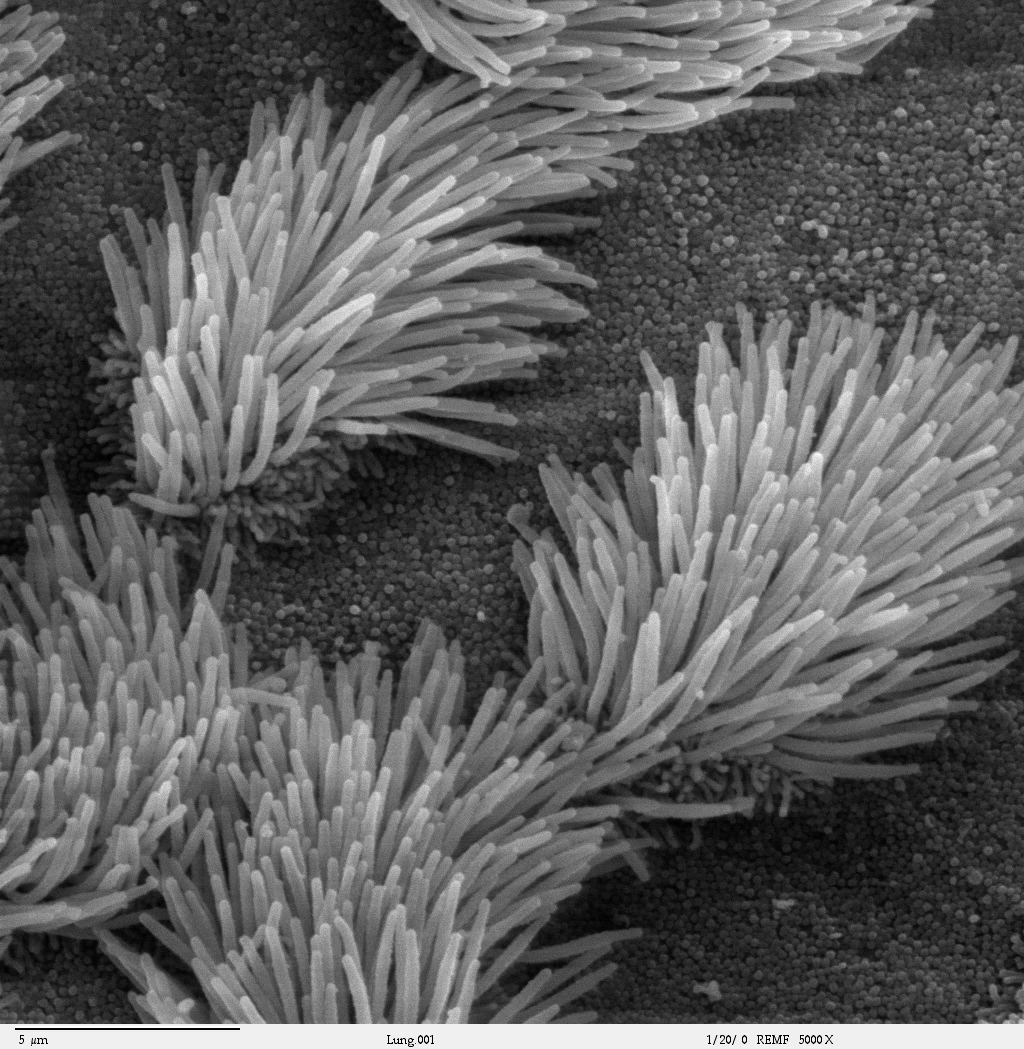The cells in the respiratory tract are covered in a long thin substance known as cilia. Cilia are organelles on the outside of some cells that can play a critical role in gathering information about the extracellular environment, processing developmental signals, and propelling the cell. Cilia are found throughout the respiratory tract where they “sweep” our lungs and throat clear of the mucus that protects our airways from pollutants and pathogens by moving in a wave-like motion.
Although much is known about how cilia are formed, many key aspects of their assembly and function remain mysteries. But a $1.7 million grant from the National Institute of General Medical Sciences for two UConn Health professors could lead to one of these mysteries being unraveled.
Dysfunction or defects of cilia can have serious consequences that impact multiple bodily systems. Primary Ciliary Dyskinesia, where cilia do not beat, can cause respiratory distress in newborns, constant nasal congestion, infection and permanent lung damage, situs inversus where the internal organs are mirror-imaged, and infertility. Defects in cilia-based signaling can also lead to brain malformations, skeletal abnormalities, kidney cysts, obesity and the inability to smell.
Professors Betty Eipper and Stephen King both from the Department of Molecular Biology and Biophysics had previously discovered that an enzyme known as peptidylglycine alpha-amidating monooxygenase (PAM), which normally modifies secreted peptides so they are bioactive, plays an important role in the assembly of cilia in a type of algae they study as well as in mammals, fish, and planarians. This novel and unanticipated role for PAM in cilia assembly is of great interest to researchers.
“We are excited that this grant will enable us to examine what appears to be a previously unappreciated, ancient and conserved cilia-based signaling pathway,” King says.
In this project, King and Eipper will dive into learning more about the roles of the PAM protein in ciliogenesis, the “birth” or assembly of cilia. They also will define the signaling mechanism that leads to the controlled, measured release of PAM in ciliary ectosomes (small vesicles that bud off the cilia to carry material into the extracellular environment), specifically from sex cells. This will allow the researchers to assess how cells control cilia-based secretion and the impacts this process has on cell-to-cell communication – another critical function of cilia.
PAM plays a critical role in the formation of certain products present in cilia. The team will look at the role of these products to help unravel another facet of the multi-functional PAM enzyme.
Studying the normal function of cilia is an important task for researchers, as before they can address the problems caused by malfunctioning cilia, they need to understand how these organelles usually work. This research will define a novel cilia-based signaling pathway which will provide the research community with new concepts to enhance their understanding of cilia-based deficiencies and ailments.
“This project demonstrates what can happen when an enthusiastic student lets faculty with very different interests explore their crazy ideas,” Eipper says.
Betty Eipper received her Ph.D. from Harvard University in biophysics. She completed a post-doctoral fellowship at the University of Oregon and moved from Johns Hopkins to UConn Health in 2000. Her research focuses on the biosynthesis, storage and secretion of peptides by neurons and endocrine cells.
Stephen King received his Ph.D. from University College London in cell biology. He was a postdoctoral research associate at the Worcester Foundation for Experimental Biology. He moved to UConn Health in 1993. His research focuses on studying dyneins (microtubule-based molecular motors), ciliary assembly and motility.
This project is NIH Grant No.: 1 R01 GM125606-01A1.



